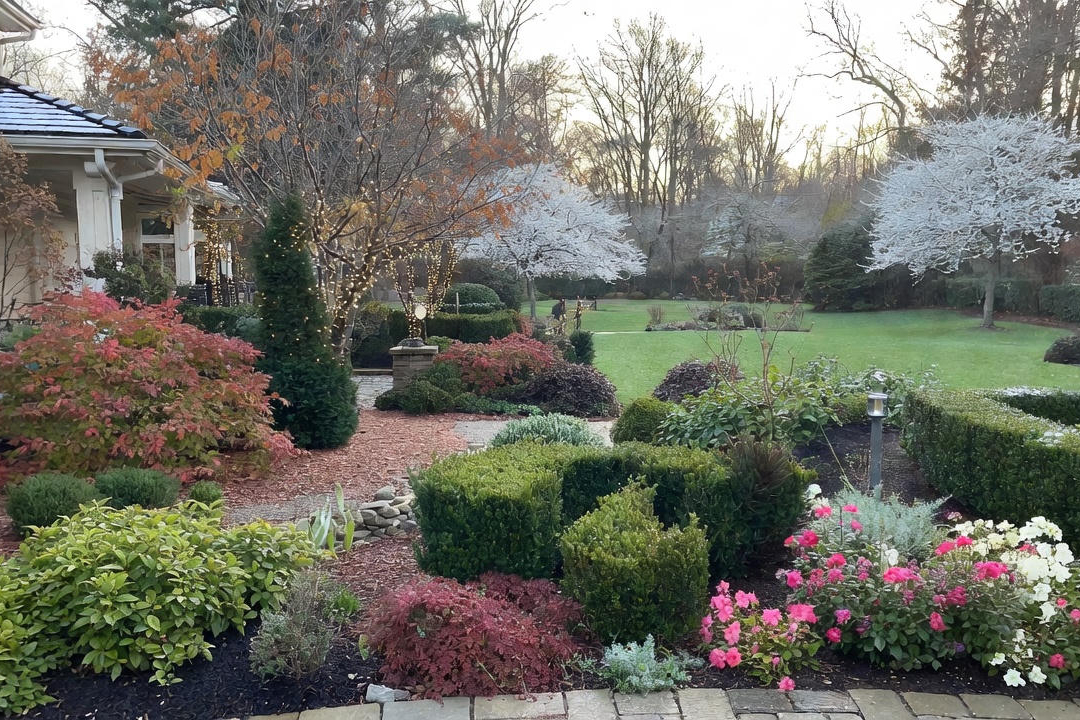Groundcover is definitively a grouping of low growing plants placed together. Most groundcovers make a gorgeous contribution to a landscape and are undoubtedly the solution to the high maintenance of a traditional lawn. Where lawns need to be mowed, fertilized, edged, and watered weekly, groundcovers most typically do not need such high maintenance care, making them a more sustainable choice over lawns. They are also quite fitting beneath trees and in other challenging areas where grass will not grow.
Types of Groundcovers
Groundcovers come in many forms: creeping vines, short perennials, and low-growing shrubs. One can find ever-green groundcovers that stay green all winter or deciduous groundcovers that drop their leaves in the winter, but return in full force in the spring. There are groundcovers that take walking abuse for path planting and groundcovers that will not tolerate walking whatsoever. Groundcovers can be stand-alone rooted plants or plants that form an intricate network of underground runners that sprout shoots from the ground.

Growing Groundcovers
Success with groundcovers can be increased with proper preparation of the soil. Dig in several inches of compost, rotted manure, and appropriate natural soil amendments based on your soil testing results. Base spacing requirements of the plants on what you expect the mature size of the plant to be, not on the size of the seedling. If planted according to mature plant size expectations, it should take two years to fill in. If you plant them farther apart than suggested, then expect nearly four years of growth from planting time. Once planted, water in well and fertilize once a year in spring with an organic fertilizer.
Once you plant a groundcover, you will want to mulch to help keep moisture in the root zone and protect from weeds. However, if your particular groundcover choice needs to spread via root from the top of the soil, mulching will slow its expansion considerably. Do not mulch these types of top-spreading groundcover plants.
Groundcover Maintenance
All plants need some maintenance and groundcover is no exception. Sometimes groundcovers, particularly groundcovers with underground runners, become invasive. Runner-based plants need a hard trimming back one or two times per year if they start to overflow the planting bed. Controlling rhizome-based plants can be simple if you stop them against a sidewalk or wall or with a metal or recycled plastic edging.
Low growing deciduous perennials and shrubs collapse or lose their leaves in the fall. It is best to clean them up after the winter for a neater and more refined look when fresh growth starts the following year. For groundcovers that stay evergreen, it is best to rake the fallen leaves out of them late in the season and trim any dead or brown spots out in the spring.

Groundcovers for Wildlife
Many types of wildlife enjoy groundcovers whether the groundcovers are planted in a traditional manner in the soil or in containers as a wildlife attractant. Chipmunks, squirrels, and birds will use certain groundcovers for nesting material and as cover. Both coreopsis and geranium are low growing perennials and not listed in this chapter, yet they are excellent choices as groundcovers that attract butterflies and other pollinators. Ajuga, creeping thyme, and spotted dead nettle attract bees and butterflies. Using groundcovers as part of your plan to help the environment and encourage wildlife and pollinators is a smart idea.
Groundcovers soften and beautify a landscape, stabilize soil, hide bare areas, and attract pollinators. Ground carpeting is the perfect buffer between a garden and a sidewalk or grass to help draw your eye in and welcome a visitor.
Download iScape now and create landscape designs that inspire. So easy to use - iScape it!




ds.jpg)
.jpg)
